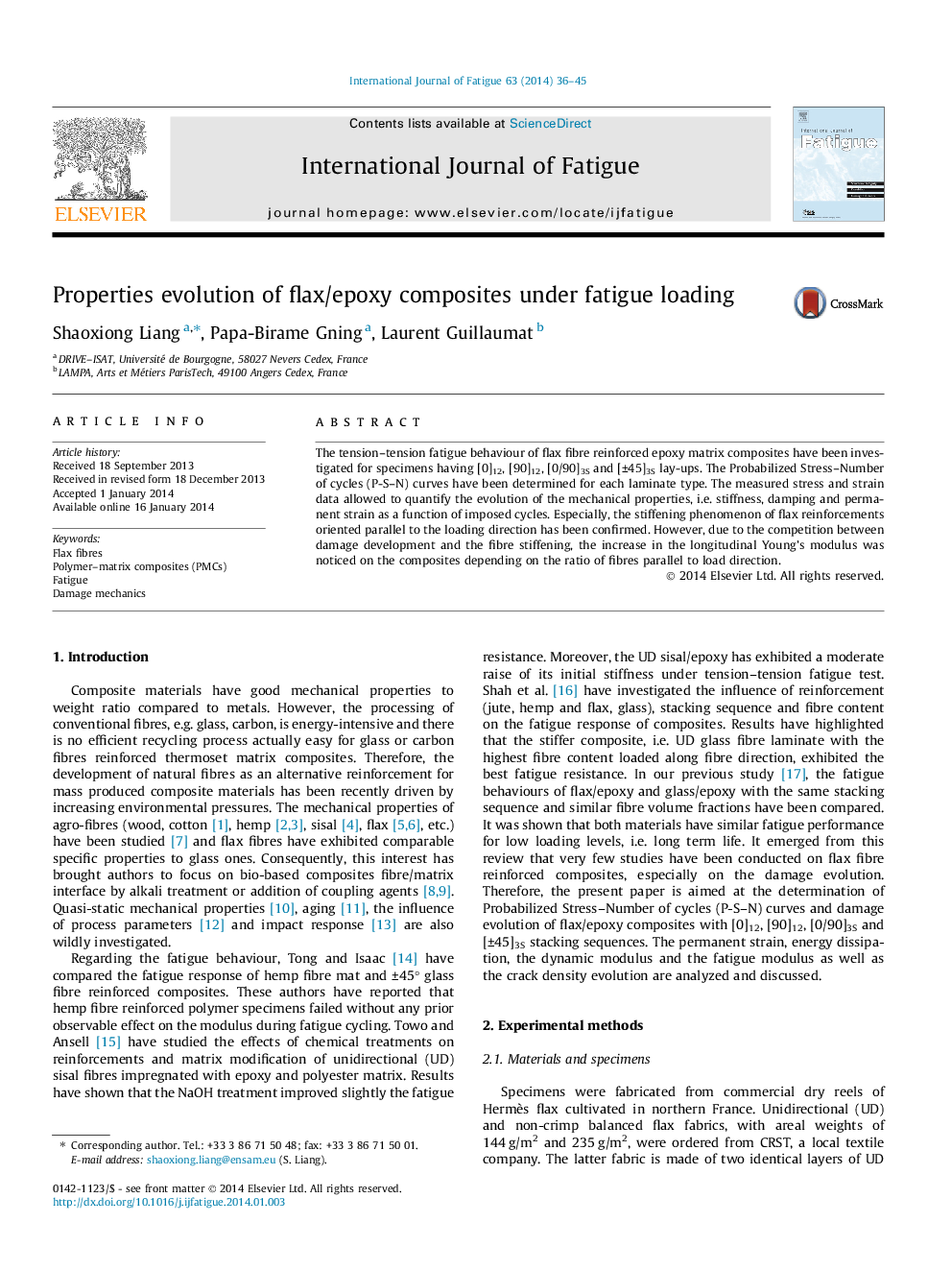| Article ID | Journal | Published Year | Pages | File Type |
|---|---|---|---|---|
| 775293 | International Journal of Fatigue | 2014 | 10 Pages |
•Flax/epoxy composites of [0]12, [90]12, [±45]3S and [0/90]3S layouts have been studied.•Plotted S–N curves showed a good suitability of the linear Wöhler’s model for the natural fibre reinforced composite.•The dynamic modulus increased of 2–8% for [0]12 and 1–4% for [0/90]3S with loading cycles.•The fatigue modulus exhibited loss of 10–55%, depending on the loading level and the staking sequence.•Damage (residual strain and fatigue modulus) correlated well the crack density evolution for [±45]3S and [0/90]3S.
The tension–tension fatigue behaviour of flax fibre reinforced epoxy matrix composites have been investigated for specimens having [0]12, [90]12, [0/90]3S and [±45]3S lay-ups. The Probabilized Stress–Number of cycles (P-S–N) curves have been determined for each laminate type. The measured stress and strain data allowed to quantify the evolution of the mechanical properties, i.e. stiffness, damping and permanent strain as a function of imposed cycles. Especially, the stiffening phenomenon of flax reinforcements oriented parallel to the loading direction has been confirmed. However, due to the competition between damage development and the fibre stiffening, the increase in the longitudinal Young’s modulus was noticed on the composites depending on the ratio of fibres parallel to load direction.
